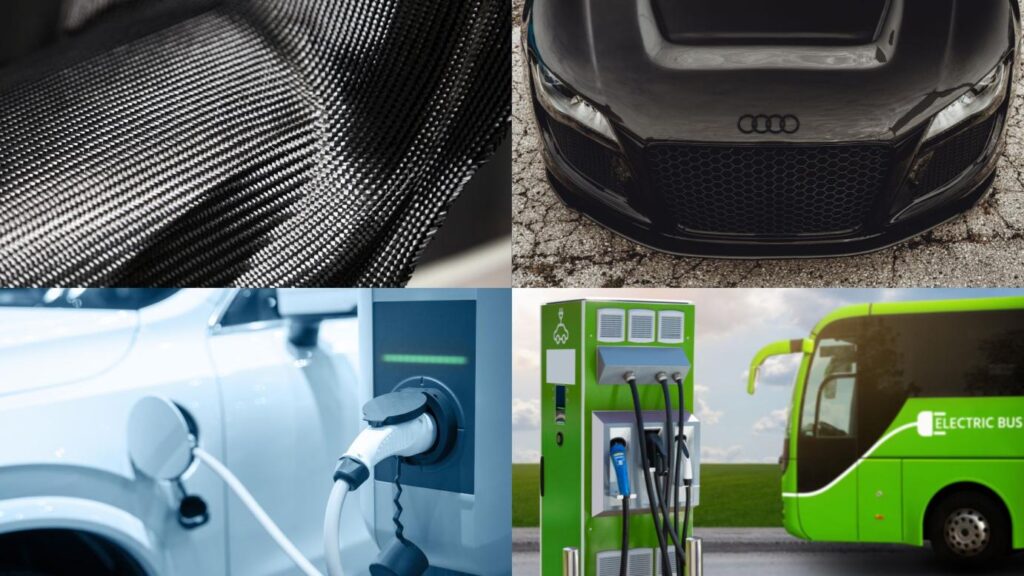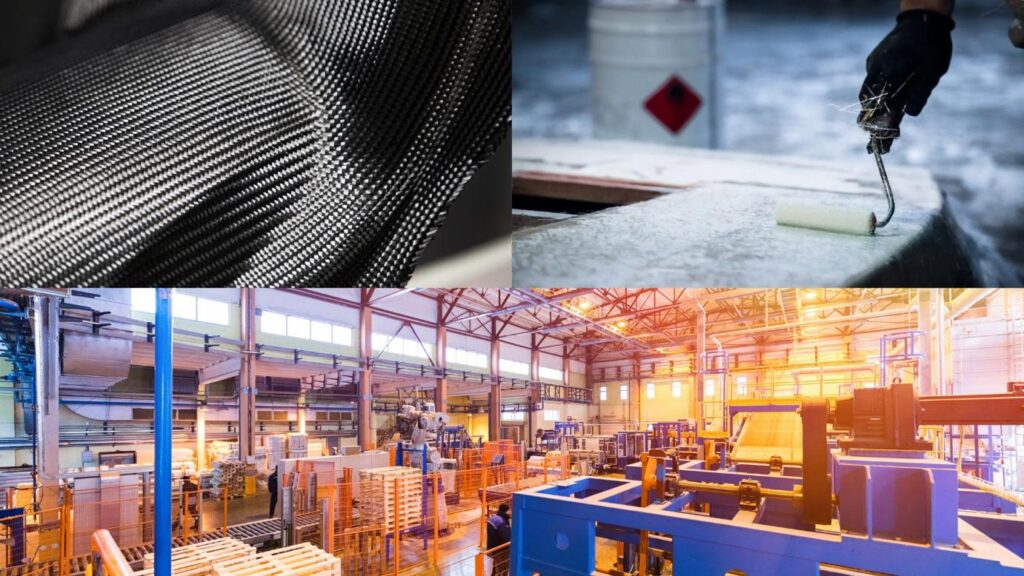In recent years, the auto industry has been actively exploring sustainable solutions to reduce its environmental impact. One such solution gaining popularity is the use of composite materials in automobile manufacturing. Composite materials offer several advantages over traditional materials, including lightweight construction, improved fuel efficiency, and reduced emissions. This article delves into the concept of sustainable composite solutions in the auto industry, highlighting their benefits, applications, and future prospects.
Table of Contents
- Introduction
- Understanding Composite Materials
- Benefits of Composite Solutions
- Lightweight Construction
- Improved Fuel Efficiency
- Reduced Emissions
- Applications of Composite Solutions in the Auto Industry
- Vehicle Body Panels
- Chassis and Frame Components
- Interior Components
- Challenges and Innovations
- Cost Considerations
- Manufacturing Processes
- Recycling and End-of-Life Management
- Future Prospects and Industry Trends
- Conclusion
- FAQs
Understanding Composite Materials
Composite materials are engineered materials that consist of two or more constituent materials with distinct physical or chemical properties. In the context of the auto industry, composites usually involve a combination of a polymer matrix and reinforcing fibers, such as carbon fibers or glass fibers. These materials offer a unique combination of strength, durability, and lightweight properties that make them ideal for automotive applications.
Benefits of Composite Solutions
Lightweight Construction
One of the key advantages of composite materials in the auto industry is their ability to significantly reduce the weight of vehicles. Compared to traditional materials like steel, composites can be up to 50% lighter while maintaining similar strength characteristics. This reduction in weight translates to improved fuel efficiency and lower carbon emissions.
Improved Fuel Efficiency
The lightweight nature of composites allows vehicles to consume less fuel, making them more fuel-efficient. With stricter emission regulations and a growing focus on sustainability, automakers are increasingly turning to composite solutions to meet these requirements. By reducing the weight of vehicles, composites contribute to lower fuel consumption and a smaller carbon footprint.
Reduced Emissions
In addition to improving fuel efficiency, the use of composite materials in automobiles helps reduce overall emissions. Lighter vehicles require less energy to operate, resulting in a lower level of greenhouse gas emissions. Furthermore, the manufacturing process for composites often generates fewer emissions compared to traditional materials, making them more environmentally friendly.
Applications of Composite Solutions in the Auto Industry
Vehicle Body Panels
Composite materials find extensive use in the manufacturing of vehicle body panels. These panels, such as hoods, doors, and fenders, can be made from lightweight composites, reducing the overall weight of the vehicle. This weight reduction not only enhances fuel efficiency but also improves handling and performance.
Chassis and Frame Components
Composites are also employed in the production of chassis and frame components. By utilizing composites in these areas, automakers can achieve weight savings without compromising structural integrity. The high strength-to-weight ratio of composites enhances the safety and performance of vehicles.
Interior Components
The interior of automobiles also benefits from composite solutions. Composites can be used in the fabrication of various interior components like dashboard panels, seat structures, and trim parts. The use of composites in these areas adds to the overall weight reduction and contributes to a more sustainable interior design.
Challenges and Innovations
Cost Considerations
While composite materials offer numerous advantages, cost considerations remain a significant challenge. Composites can be more expensive to manufacture compared to traditional materials, leading to higher production costs. However, ongoing advancements in manufacturing processes and economies of scale are gradually reducing the cost gap between composites and conventional materials.
Manufacturing Processes
Another challenge lies in the manufacturing processes for composite components. Specialized techniques, such as resin infusion and autoclave curing, are required to fabricate composite parts. These processes demand skilled labor and specialized equipment, which can limit the widespread adoption of composite solutions. However, research and development efforts are focused on streamlining production methods and making them more accessible to manufacturers.
Recycling and End-of-Life Management
The recycling and end-of-life management of composite materials pose unique challenges. Unlike traditional materials that can be easily recycled, composites require innovative recycling methods to recover the valuable constituents effectively. The industry is actively researching and developing recycling technologies to address this issue and ensure the sustainable disposal of composite materials.
Future Prospects and Industry Trends
The future of sustainable composite solutions in the auto industry looks promising. As governments worldwide tighten emission regulations and consumers prioritize eco-friendly vehicles, automakers will increasingly turn to composites to meet these demands. Advancements in manufacturing processes, cost reduction, and recycling technologies will further drive the adoption of composite materials. We can expect to see a greater integration of composites in vehicle designs, leading to more sustainable automobiles.
Conclusion
Sustainable composite solutions offer a compelling path for the auto industry to reduce its environmental impact. The lightweight construction, improved fuel efficiency, and reduced emissions provided by composites make them a viable choice for automakers. Despite challenges such as cost considerations, manufacturing processes, and recycling, ongoing innovations and research are driving the adoption and integration of composite materials. The future holds immense potential for sustainable composite solutions in the auto industry.
FAQs
Q1: Are composite materials safe for use in automobiles?
Yes, composite materials used in the auto industry undergo rigorous testing to ensure their safety and reliability. They meet stringent standards and regulations to ensure they perform as intended.
Q2: Can composites be repaired if damaged?
Yes, composites can be repaired using various techniques, depending on the extent of the damage. Repair processes often involve removing damaged areas and applying composite patches or laminates to restore structural integrity.
Q3: Are composites only used in high-end vehicles?
No, composites are being adopted across various segments of the automotive industry. While they have been prevalent in high-end vehicles, advancements in manufacturing processes are making composites more accessible for use in mass-produced vehicles as well.
Q4: Are composite materials recyclable?
Composite materials pose challenges in terms of recycling, but ongoing research is focused on developing efficient recycling technologies. Innovations are being made to recover valuable constituents from composites and ensure their sustainable disposal.
Q5: How do composite solutions contribute to sustainability?
Composite solutions contribute to sustainability by reducing the weight of vehicles, improving fuel efficiency, and lowering emissions. Their lightweight nature helps conserve energy and reduce the overall environmental impact of automobiles.








